
- -11%
ebook TEACHING ENGLISH as a Foreign Language A Guide for Professionals
Odkryj najnowsze osiągnięcia w nauczaniu języka angielskiego jako obcego z podręcznikiem Teaching English as a Foreign Language, autorstwa ekspertki Marii Dakowskiej. Ten wyjątkowy ebook, wydany przez renomowane Wydawnictwo Naukowe PWN w 2011 roku, jest niezbędny dla każdego, kto chce pogłębić swoją wiedzę na temat dydaktyki języków obcych.
Podręcznik Teaching English as a Foreign Language łączy w sobie najnowsze badania z dziedzin takich jak psychologia uczenia się, teoria komunikacji i dydaktyka. Zrozumienie procesu przyswajania języka obcego nigdy nie było tak kluczowe, a ten ebook dostarcza wszystkich potrzebnych informacji, aby zoptymalizować naukę języka angielskiego.
Autorka podkreśla aktywną rolę ucznia w procesie edukacyjnym poprzez wybór odpowiedniej strategii uczenia się. Każdy rozdział zawiera podsumowanie, wykaz lektur uzupełniających, pytania i ćwiczenia, które pomogą Ci przygotować się do zaliczeń i egzaminów. Dzięki temu ebookowi nauka staje się nie tylko skuteczna, ale również przyjemna.
Pobierz ten wyjątkowy ebook Teaching English as a Foreign Language w formacie PDF i zanurz się w świecie nowoczesnej dydaktyki językowej. Odkryj, jak najlepsze praktyki edukacyjne mogą wpłynąć na Twoje umiejętności językowe.
Nie czekaj! Kup e-booka Teaching English as a Foreign Language już dziś i zacznij swoją podróż do perfekcyjnego opanowania języka angielskiego jako obcego. Ten ebook to bestseller, który pomoże Ci osiągnąć sukces w nauce.
Dostępny w sklepie z ebookami lub do pobrania bezpośrednio na Twoje urządzenie. Ebooki to idealne rozwiązanie dla każdego, kto ceni sobie wygodę czytania i dostępność najnowszej wiedzy w dowolnym miejscu i czasie. Wybierz Teaching English as a Foreign Language i zacznij swoją przygodę z angielskim już teraz!
Spis treści ebooka TEACHING ENGLISH as a Foreign Language
PART ONE Where do our ideas on foreign language teaching come from? 171. Foreign language teaching in a historical perspective 17
1.1. The role of Latin 17
1.2. Grammar as the key to foreign language learning. The Grammar Translation Method 18
1.3. Reactions to the Grammar Translation Method 20
1.3.1. The Reform Movement 22
1.4. The Natural and the Direct Methods 23
1.5. The Reading Method 26
1.6. The current view on the role of grammar 28
1.7. The current view on the function of translation 29
1.8. The current view on the role of the text 32
Topics and review questions 32
Further reading 33
PART TWO Mainstream and alternative methods in TEFL in the second half of the 20th century 36
2. Audiolingualism in teaching English as a foreign language 36
2.1. Approach, method, technique 36
2.2. Sources of audiolingualism 36
2.2.1. Influences from psychology 37
2.2.2. Influences from linguistics 38
2.3. The Audiolingual Approach, Method and Techniques 39
2.3.1. Five audiolingual slogans and their influence on the method of teaching 40
2.3.2. Further characteristic features of the Audiolingual Method 43
2.3.3. Characteristic techniques 45
2.4. A critical look at the Audiolingual Approach, Method and Techniques 47
2.5. The current view on drill, imitation, and repetition 49
Topics and review questions 52
Further reading 52
3. The Cognitive Code Learning Theory 52
3.1. Influences from psychology 53
3.2. Influences from linguistics 55
3.3. Five slogans of the Cognitive Approach and their implications for the Cognitive Method of foreign language teaching 57
3.4. Further characteristic features of the Cognitive Method 59
3.5. Closing remarks on the Cognitive Method 62
3.6. The current view on the link between materials, meaning, and memory processes 63
Topics and review questions 64
Further reading 65
4. Developments in foreign language teaching following the Audiolingual and the Cognitive Methods 65
4.1. Pessimism regarding the search for an ideal method 65
4.2. The eclectic orientation 66
4.3. The alternative methods 67
4.3.1. The Silent Way by Caleb Gattegno 68
4.3.2. Total Physical Response by James Asher 71
4.3.3. Suggestopedia by Georgi Lozanov 73
4.3.4. Community Language Learning by Charles Curran 76
Topics and review questions 79
Further reading 80
4.4. Focus on the learner 80
4.5. Individual factors in foreign language learning 82
4.6. Individualizing foreign language instruction 84
4.7. The beginnings of Second Language Acquisition Research 86
Topics and review questions 87
Further reading 88
PART THREE Communicative Language Teaching (CLT) 90
5. The Communicative Approach to foreign language teaching 90
5.1. Foundations of the Communicative Approach 90
5.2. Interest in doing things with words 90
5.3. The notion of communicative competence 92
5.4. The importance of discourse in CLT 94
5.5. The notion of role 97
5.6. Developments in communicative syllabus design 98
6. The Communicative Method and Techniques. Evaluating CLT 101
6.1. The Communicative Method 101
6.2. Criteria of communication in CLT 101
6.3. Principles of the Communicative Method 103
6.3.1. Further issues in the Communicative Method 105
6.4. Typical activities and techniques 107
6.4.1. Structured dialogue 108
6.4.2. Jig-saw reading and listening 108
6.4.3. Role-play 109
Further reading 110
6.4.4. Drama 110
Further reading 111
6.4.5. Simulation 111
Further reading 113
6.4.6. Project 113
Further reading 115
6.5. Evaluating CLT 115
Topics and review questions 121
Further reading 122
PART FOUR The current perspective on teaching English as a foreign language 123
7. Focus on verbal communication, learning, and reasoning 123
7.1. The nature of communicative processes 124
7.2. The main components of our learning ‘equipment’ 128
7.3. Strong ties between verbal communication and learning 131
7.4. Language as a special code of verbal communication 132
7.5. Reasoning processes available to the language learner 133
Topics and review questions 134
Further reading 135
8. The whole-person involvement in verbal communication and learning 135
8.1. The learner’s contribution to the dynamics of verbal communication and learning 135
8.1.1. The role of cognitive resources 136
8.1.2. Making communicative adjustments 137
8.1.3. The learner’s creative and constructive involvement 137
8.2. Personality factors 138
8.2.1. The role of the learner’s personality 138
8.2.2. The role of self-concept and self-esteem 138
8.2.3. Communicative assertiveness 140
8.3. The learner’s development along the lifespan 141
Topics and review questions 142
Further reading 143
9. Conditions for foreign language learning. Input, interaction, feedback. The role of cultivation strategies 143
9.1. Primary conditions for foreign language learning 144
9.2. What can we learn from observing children? 145
9.3. Secondary conditions for foreign language learning. Cultivation of language learning in the classroom 146
9.3.1. The essential processes in foreign language learning and teaching 147
9.4. A look back at the traditional approaches to foreign language teaching 150
9.5. The nature of teaching – the role of the teacher 151
9.6. Focus on form and accuracy 153
9.7. The origin and role of the foreign language teaching method at the beginning of the 21st century 154
Topics and review questions 156
Further reading 156
PART FIVE How communication and learning emerge 157
10. The development of the language learner in childhood and adolescence 157
10.1. Landmarks of development 158
10.1.1. Gradual emergence of verbal communication 160
10.2. The first stage – infancy and toddlerhood 160
10.2.1. The psychosocial development 160
10.2.2. Communication 161
10.3. Early childhood (3–6 years) 163
10.3.1. Language and communication in early childhood 165
10.3.2. Play in early childhood 166
10.4. Middle childhood 166
10.4.1. Piaget’s stage of concrete operations 166
10.4.2. The development of memory in middle childhood 167
10.4.3. The development of thinking 169
10.4.4. Language development 169
10.4.5. Developing a sense of humour 170
10.4.6. Gifted and creative children 171
10.4.7. Personality and social development in middle childhood 172
10.5. Adolescence 173
10.5.1. Intellectual development in adolescence 174
10.5.2. Personality development 174
10.5.3. The search for identity, including sexual identity 175
10.6. Resulting principles of foreign language teaching in childhood and adolescence 176
Topics and review questions 178
Further reading 178
PART SIX Foreign language skills in the context of verbal communication 179
11. Spoken and written discourse 179
11.1. Comprehension and production as an integral part of verbal communication 179
11.2. Differences between spoken and written discourse 180
11.3. Authentic and didactic texts. Authentic and didactic tasks 183
11.4. Stages in learning a skill in a foreign language 187
Topics and review questions 189
Further reading 190
12. Receptive skills: reading comprehension 190
12.1. Reading as a form of interaction 190
12.2. Bottom-up and top-down processes in reading 191
12.3. The learner’s angle on reading 192
12.4. The levels of reading comprehension 193
12.5. The teacher’s analysis of the text for its communicative and language learning ,potential 196
12.6. Sources of difficulty in reading comprehension and strategies of dealing with them . 200
12.6.1. Increasing background knowledge 200
12.6.2. Highlighting the genre 202
12.7. Vocabulary and the reading passage 203
12.8. Types of reading and their function in learning English as a foreign language 205
12.9. Options in designing reading tasks. Pre-reading, reading, and follow-up 207
Further reading 212
13. Receptive skills: listening comprehension 212
13.1. Functions of auditory input in foreign language learning 213
13.1.1. The learner as a member of an audience 213
13.1.2. The learner as an addressee 214
13.1.3. Input for pronunciation 215
13.2. Listening comprehension as an integral part of verbal communication 217
13.3. Difficulties experienced by foreign language learners in listening comprehension tasks 218
13.4. Guidelines for listening tasks 220
13.5. Auditory input and various follow-up activities 220
13.6. Activities aimed at developing listening comprehension 222
13.7. The function of tapescript in listening comprehension tasks 226
13.8. Options in designing a listening comprehension task 227
Further reading 231
14. Productive skills: speaking 231
14.1. Speaking as an act of verbal communication 232
14.2. Long-term investment in speaking 234
14.3. The structure of conversation 235
14.4. Abilites involved in participating in a conversation 237
14.5. The role of anxiety in developing the speaking skill 238
14.6. Cultivating articulacy in EFL 240
14.7. Selected activities for the development of the speaking skill 244
Topics and review questions 247
Further reading 247
15. Productive skills: writing 248
15.1. Writing as an act of constructing a message 248
15.2. Differences between experienced and inexperienced writers 250
15.3. Long-term investment in the writing skill 251
15.4. Learning to write versus process writing 252
15.5. Sample activities in learning how to write in EFL 254
15.6. Process writing 258
15.7. Error correction in written work 259
Topics and review questions 261
Further reading 262
Conclusions 263
Additional terms 267
References 273
Index 281
Name index 289
Szczegóły ebooka TEACHING ENGLISH as a Foreign Language
- Wydawca:
- Wydawnictwo Naukowe PWN
- Rok wydania:
- 2011
- Typ publikacji:
- Ebook
- Język:
- angielski
- Format:
- epub mobi
- Liczba stron:
- 292
- Miejsce wydania:
- Warszawa
- ISBN dla wersji papierowej:
- 9788301144982
Recenzje ebooka TEACHING ENGLISH as a Foreign Language
-
Reviews (0)

Na jakich urządzeniach mogę czytać ebooki?
- -11%




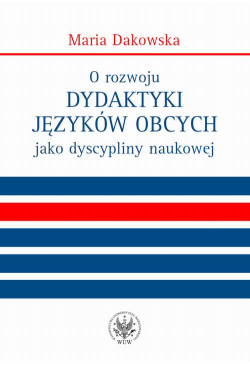
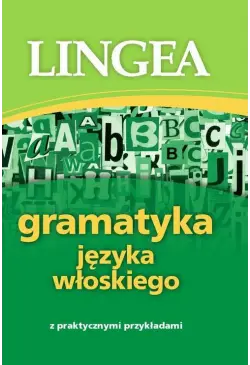


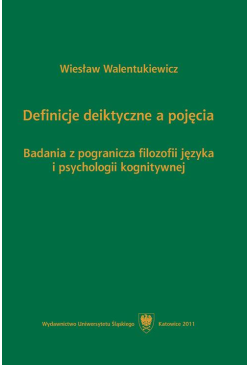

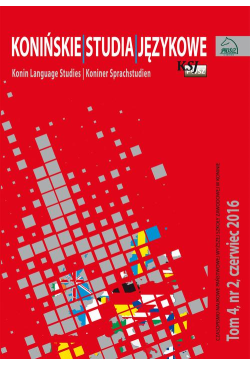

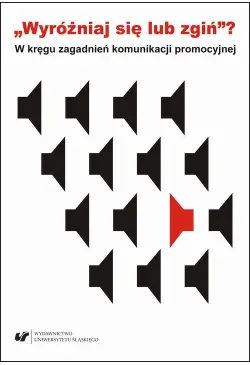
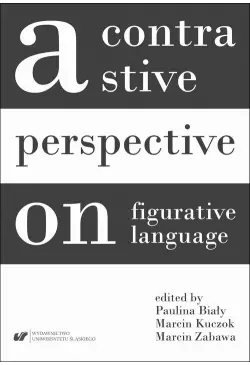


@CUSTOMER_NAME@
@COMMENT_TITLE@
@COMMENT_COMMENT@